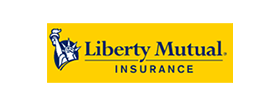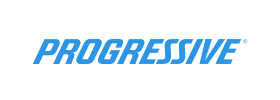Is it better to lease a car or buy one?
Whether or not to lease a car can often be a very polarizing topic. Some people swear by it while others are strongly against it.
That makes it difficult to decipher the pros and cons of leasing a vehicle. Like many financial decisions, the right answer depends on the person and their situation. Details like price, terms, driving record, and insurance history can all play a role.
Misinformation and common assumptions add to the confusion. But leasing a car makes sense for a lot of people.
The best way to decide if leasing a car is right for you is to weigh the pros and cons. It’s also important to understand how leasing a car works and what tips might help you get the best deal.
Here are some of the details you might consider:
What is a car lease?
When you lease a car you are essentially renting the car for a pre-set length of time and number of miles. Many car lease agreements last two to three years and often allow you to buy the car at the end of the term.
How to lease a car:
On the surface, it’s easy to understand how leasing a car works.
- Review car dealership websites.
- Call or visit the dealership.
- Find a vehicle and lease term that fits your needs and budget.
One difference between shopping for a traditional car loan and a lease is what you’d focus your energy on. When you’re looking to buy a car, getting the lowest sale price is typically the goal. When leasing, your energy is better spent trying to determine the lowest possible payment. Make sure you consider all taxes and fees in the payment amount.
Whether you are looking to lease or buy a car, it’s beneficial to shop at different dealerships to find the best deal.
Tip: Don’t forget to ask for the lease terms from each dealership in writing. That you can compare all fees, prices, and terms.
Why do people lease cars?
There are many different reasons why someone might choose to lease a car.
- It allows you to drive higher-end cars for a more affordable monthly payment.
- A two to three-year lease allows you to upgrade without worrying about the trade-in value or having to sell your old car.
- Since most leased vehicles are newer, they are often still under warranty. Many include free oil changes and other routine maintenance, as well as less risk of mechanical breakdown.
- There are sometimes tax advantages for business owners who lease cars.
What are some of the downsides to leasing a car?
While leasing a car is a good option for some people, there are some disadvantages as well.
- The obvious downside to leasing a car is that you don’t own the car at the end of the lease. That means you don’t have a trade-in if you decide to buy a car.
- If you lease one car after another, the monthly payments just continue on. If you repeatedly lease cars, you may end up paying more over time than if you had bought a car.
- Most car lease agreements limit the number of miles the vehicle can be driven annually. The limit is generally between 12,000 to 15,000 miles. If you exceed the agreed upon mileage, you could be responsible for paying 10 to 50 cents per mile over the limit.
- You can be penalized for wear-and-tear if you don’t maintain the vehicle. If you’re prone to fender-benders or your kids tend to wreak havoc on a car, that might cost you when your lease ends.
Another thing to consider: You can break an auto lease, but it will likely cost you a hefty fee for early termination.
Should I put a down payment on a leased car?
If you can afford a higher monthly payment, my recommendation would be to not put any money down. The reason for that is because you could end up losing that money if your leased vehicle was stolen or totaled.
Insurance companies pay for the actual market value of the vehicle at the time of the loss. So if something happens to your leased car, you’ll likely owe more than the vehicle is worth.
Gap coverage can help with that since it covers the difference between the market value and what you owe. If you have Gap coverage, you wouldn’t end up owing that difference.
Let’s look at two scenarios with the same vehicle:
The vehicle is worth $30,000. The residual value after the 36-month lease is projected to be $20,000. That means you’re leasing the car for $10,000 over the 36-month term.
Scenario 1:
You put down $2,000 to get a lower monthly payment, bringing the total due for the rest of the lease term to $8,000.
Without factoring in the interest rate, you’re paying $222.22/month ($8,000/36 months) for your lease.
You’ve had it for 10 months when someone rear-ends you and totals the vehicle. Your auto policy has Gap coverage, so luckily you aren’t required to pay the difference between the market value and the remainder due on your lease. You don’t owe anything additional, but you’re not getting your down payment back either.
Aside from the upfront costs to drive off the lot and the interest rate, you’ve paid $4,222.20 for the 10 months you were driving the vehicle. $2,222.20 in monthly payments and $2,000 down.
Scenario 2:
You leased the same vehicle as the first scenario, but you put no money down.
Without factoring in the interest rate, you’re paying $277.78/month for the lease.
Just like the first scenario, the vehicle gets totaled after 10 months and you had Gap coverage. So you’re not left paying anything out of pocket.
Aside from the upfront costs to drive off the lot and the interest rate, you’ve paid $2,777.80 for the 10 months you were driving the vehicle.
The difference between those scenarios is that putting down $2,000 ended up costing you $1,444.40 out of pocket.
If you make it through the whole lease unscathed, you may end up paying a little more if you don’t put any money down. Since the interest rate on a lease is usually pretty low, the extra you’ll pay in interest is minimal.
Personally, I’d rather keep the down payment and pay a couple hundred extra over the course of the lease. That protects me from being out my entire down payment if something happens before my lease is up.
Should I buy my leased car?
When deciding what’s right for you, you’ll need to analyze the costs and benefits.
Do you enjoy driving the car and does it suit your needs? That may seem like a funny question, but consider your lifestyle. If you leased a smaller car but your family is expanding, it may not be a good fit for the long term.
Are you happy with the car’s performance? Is the gas mileage is reasonable? Is the car always in the shop? Analyze how much the car’s upkeep will cost you if you do buy it.
One way to save money when buying your lease car is to finance through your bank or work directly with the lender. If you decide to buy the car, explore all your financing options before you commit.
Insuring a leased car
Your lease will require that you return the vehicle in essentially the same condition it was in when you drove it off the lot. So it makes sense to put extra thought into how you insure the car.
Here are some things you should consider when insuring a leased vehicle:
1. Get Original Equipment Manufacturer (OEM) coverage on your auto policy. Most insurance policies will repair vehicles using after-market parts if there is a loss. That would likely violate the terms of your lease. OEM coverage guarantees original manufactured parts if your vehicle is damaged in a covered loss.
2. Make sure you have Gap coverage. Gap coverage bridges the gap between the value of the vehicle and what you still owe on it at the time of a loss. Some leases include Gap coverage built into the contract. If your contract doesn’t include it you can also add it to most auto policies.
Remember, Gap coverage will not give you back your down payment if the vehicle is totaled. It will simply pay the difference between the value and what you still owe.
3. Most leases will require that you carry Comprehensive and Collision coverage on the vehicle. There is also usually a limit to how high of a deductible you can have for those coverages. Most of the time, the highest deductible the lease will allow is $1,000. The specific amount depends on your lender and the terms of your lease.
The pros and cons of leasing a car vary from person to person. What’s right for you might not be what’s best for your neighbor. Analyze your needs and budget and then shop to make sure you make the right decision for you.
- My boat is already paid for and rarely used. Should I still invest in boat insurance?
- Wondering If Homeowners Insurance Is A Smart Investment? What to Know
- Commercial Insurance: Security Upgrades For An Office Setting
- The Difference Between Classic, Historic, Vintage, and Restored Automobiles
- Recreational Drone Insurance: Flying with Peace of Mind






















